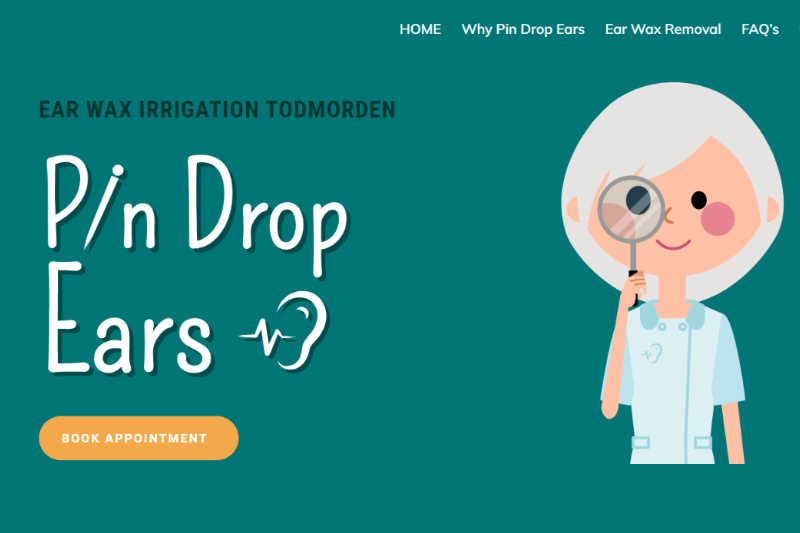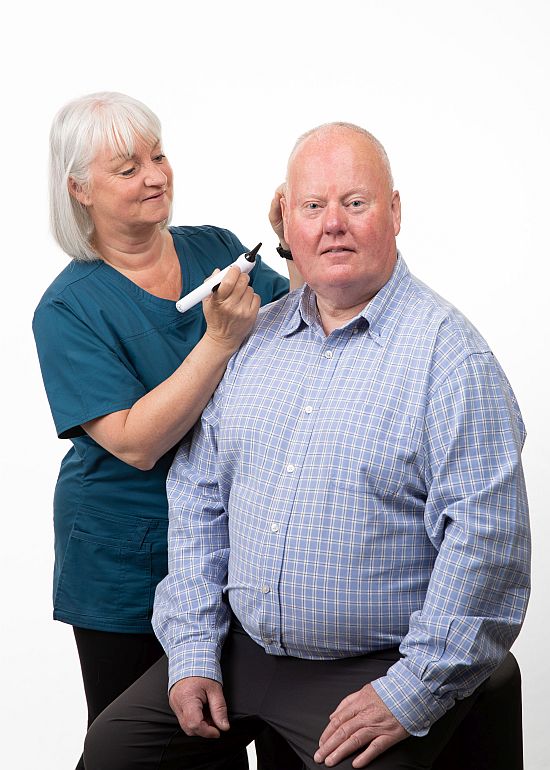Step By Step To Building a New Business & Brand: Case Study
I’ve helped quite a few brand new businesses “start from scratch” over the years, including The Hunt Coat Company for which I went through an almost identical process last year, in mid-2021.
My partner Angela took early retirement from the NHS in May 2022 and decided she’d like to start her own small part-time business to both keep herself busy and supplement her pension.
The process we then went through to take her business idea from conception to launch – and beyond – provides an excellent case study and guide for any new business start-up.
Introduction
Angela had been a registered nurse for over 30 years, the last 17 of these were spent working in the community where part of her role had been to perform ear irrigation to remove excessive wax from patients’ ears.
She had recognised that over recent years an increasing number of NHS Trusts have withdrawn this service from their provision and patients are either seeking it privately or joining long waiting lists for the procedure to be undertaken.
From this, the idea for Pin Drops Ears was born – and highlights the first VITAL step before starting ANY business…
Pre Step 1: Establish Demand For Your Product or Service
The first vital step that many new business owners may gloss over, or neglect entirely, is that you must establish – as much as you possibly can – whether there is a genuine demand for your product or service. And also if this demand is sufficient to generate the income you need to make your business idea viable.
Angela knew that there was a demand for this service because of her personal experience in carrying out ear wax removal over many years – and the fact that it was being withdrawn as a ‘standard’ service by many NHS Trusts. And there were other factors which enforced her confidence in the demand too.
The other issue to consider in regard to a business’s viability is its “cost to sales” equation and fortunately, in this case, this is very low compared to the majority of business models.
After the initial set-up costs, ongoing costs are minimal* outside of the annual professional indemnity insurance and a few consumable items.
* Depending on how much you want and need to spend on ongoing promotion & advertising. Although she did of course have the advantage of having someone like me who could create a business & brand for her from scratch. 🙂
Step 1: Choose Your New Business Name
The first thing to decide upon – after you’ve established there IS a need and desire for your new business idea – is your new business’s name.
This would normally be around something that best describes your new product or service but can also be around your own name, or something more abstract.
For example, I came upon the name Customology because my business is about helping businesses “attract new customers and keep existing ones coming back for more“. However, it could also be called something more specific and direct such as “Alan Rogers Website Design & Local Business Marketing“.
Angela chose her new business name from a phrase she would often say to patients following their ear wax removal procedure. “You’ll be able to hear a pin drop now!“
I thought that Pin Drop Hearing may be a better name but then, through Google, we found that this business name was already being used by a company offering a similar service in London.
After doing a Google search for Pin Drop Ears, her original idea, and finding there were no existing businesses showing here under that name there was one last thing to do. Check to see if the website domain name pindropears.co.uk was still available to purchase.
Sometimes domain names are already taken even if there is no website yet created on it. However, in this case, it was still available so Pin Drop Ears it was.
Step 2: Creation of Initial Business Branding Designs
To most people branding is just about the logo, colours and fonts that a business uses in their online profiles and marketing etc – but it’s actually much more than this.
It’s about the company’s mission statement, business ethics & ethos, how they engage with their customers – and staff – and more besides.
However, in this case, I am going to focus on just the core visual elements that are used in the creation of the website, social media profiles and the fundamental offline promotional materials – such as flyers and business cards – that a new start-up business may need.
The creation of a new, original business logo is a particular skill and something I will sometimes outsource to a specialist. It can cost several £100’s.
With Pin Drop Ears I quickly had the idea of replacing the “i” in “Pin” with the vector image of a pin and so looked around for a ‘tall’ font that this concept may best work with – and was then able to proceed in developing this logo myself.
Angela was keen to add an ear icon to the logo so we searched online to find the one you’ll see here and on the site.
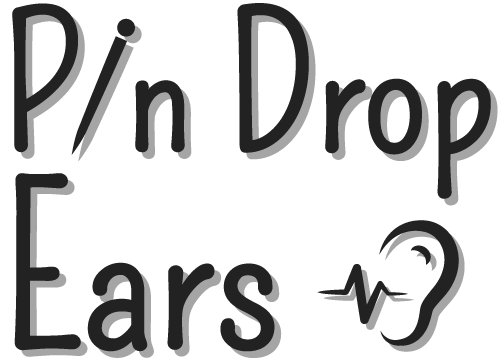

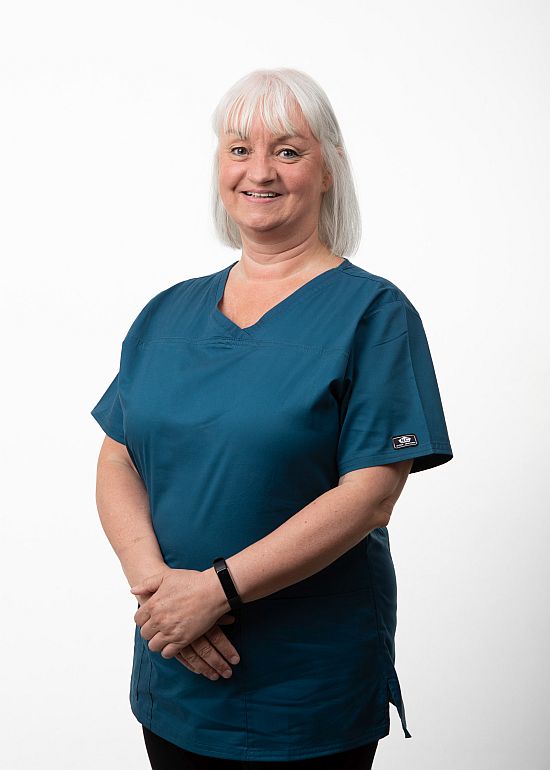
The other elements of a business’s visual branding are the colour and font choices. You really need to have a good idea of these before starting the website, although they will often change somewhat as work progresses.
The client often has some ideas on the colours for their website and brand – and from this I will research colour palette options that best work together with the initial colour ideas. This will always include a sharply contrasting colour which will mainly be used as a standout “Call to Action” such as a button, or link text.
As already mentioned, everything about the design process is fluid and there will often be changes throughout.
On this project, we started off with a palette based around light green and then transitioned to a (totally different) darker teal colour. This came about from Angela searching for a tunic top ‘uniform’ to wear and seeing the colour here! Yes, in this case, the consistency in the main brand colour runs through to the clothing too!
With fonts, it usually just comes down to a feeling about which fonts look and work best for the type of product or service and style of the website I’m creating.
I very rarely use more than two different fonts on a website (excluding the logo) – one for the Header Text and another for the Body Text. These can be made to appear to have much more variation by using capitalisation, different font weights – and letter spacing etc
Step 3: Creating A New Business Website
Once there is a vision of all these core brand design components then the creation of the website can really begin. Although, by this stage, I will already have the structure of the website mapped out and some strong ideas about its styling.
Without going into a full step-by-step breakdown of the general website design process here – (some of this is detailed elsewhere on this site, such as in this previous blog post) – I will mention some of the major points, which are demonstrated within the building of this site.
i) The Home Page should serve as a brief introduction & overview of the product or service as a whole and link to other pages within the site for more details. Provide an overall general “flavour” if you like.
It should also include easily available contact details should anyone what to get in touch immediately. Or direct links to purchase the product if yours is an eCommerce website.
A ‘good’ Home Page may even provide enough information, reassurance and confidence to the prospect that they make the decision “to buy” without having to visit any other pages within the website. But we can’t rely on that…
ii) In this case I was very lucky because Angela provided the vast majority of the written content for this website. ALL I had to do was decide upon how best to present it.
The majority of the businesses I work with don’t really have any idea of where to start in writing and providing content so I will take the time to get to know their business and then write it for them. Once I’ve finished then I will ask them to have a thorough read of everything and let me know of any changes they’d like to make.
Not every web designer will be able to do this and will insist on the client providing it – or outsource this task to another freelancer who can help provide it.
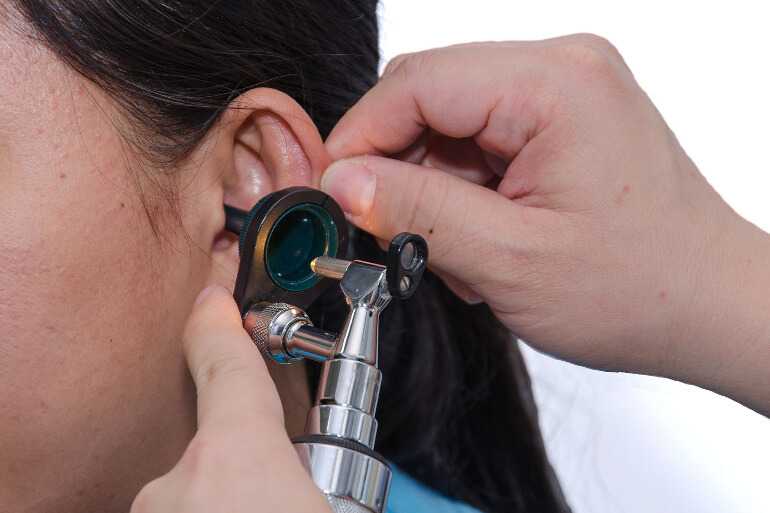
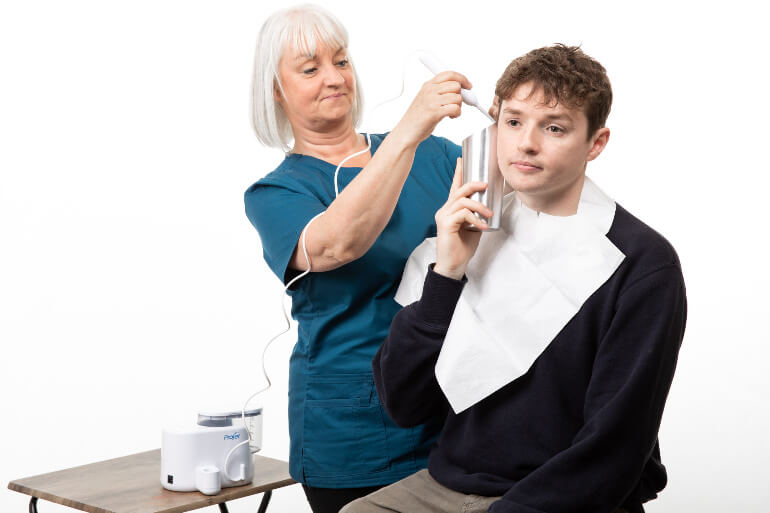
iii) (Good quality) images play a HUGELY important role in the quality of your website. And with it the visitor’s perception of your business overall.
Many people will resort to “stock images” and these can work if you can get some good quality ones. Ones which don’t look too obviously like stock images!
With Pin Drop Ears, good quality stock images for ear cleaning were in short supply – as you may imagine – and so unfortunately weren’t even an option. This is how I first came upon the idea of using a cartoonlike “vector illustration” – purchasing the core image file and then having it edited to look more like Angela herself.
However, we also needed some more images and so I got in touch with a local photographer I’ve worked with before to arrange a photo shoot in his studio. The models were family members and from that, we have a portfolio of images to use not only on the website but also on Social Media and other promotional materials.
iv) Frequently Asked Questions – By anticipating and answering your (ideal) customers’ most likely questions you will not only save responding to the same questions time and time again, you will also certainly convert more visitors to enquiries because you have made everything easier for them.
v) As with providing FAQs, by making sure your contact details are readily available on EVERY page you are then making it so much easier for a prospect to get in touch with you whenever they reach the point of wanting to do so.
Step 4: Making Your Website An Effective Customer Converting Machine
Step 3 was all about the content and aesthetics of the website “Front End” but there’s equally as much that goes on behind the scenes in the “Back End” of the site in order to optimise its performance and potential for your business.
Key points In brief…
i) Resize all images before uploading them to your website to make sure they’re not too large, in their dimensions and/or file size, so that they are not slow to load (appear)
ii) Name all your images with keywords title tags before uploading ie, “Contact Us At Pin Drop Ears For Ear Wax Removal in Todmorden” NOT “IMAGE3421” as it may be titled on your camera
iii) Make sure all your website pages have Meta Title Tags and Descriptions to help Google find you and recommend your business in its search results
iv) Make sure your website loads (launches/appears) quickly when anyone tries to access it
v) Make sure your website is FULLY Responsive and presents a great experience to visitors on ALL different devices and screen sizes. I make a lot of customisations for the different screen sizes and experiences of visitors viewing on either desktop, tablet, or mobile devices.
Step 5: Preparing For Launch
No matter how good your website, unfortunately you’re unlikely to have potential clients flocking to you from that alone from Day 1. ie, searching for your product or service on Google and being presented with your business. Probably not for quite a while!
You’re going to have to get people to find out about your new business in other ways. Also known as Marketing!
What you do will very much depend upon your product, service, and service area, but with Pin Drop Ears – being a service-type business that operates within a limited location – this is what we did to spread the word.
i) Created a Facebook Business Page including a Cover Image & Profile Image – and added any other information allowed on the Page.
ii) Created a Google Business Page which will not only help you appear in Google’s search ranking quicker but will also allow people to leave all important Google Reviews for you too.
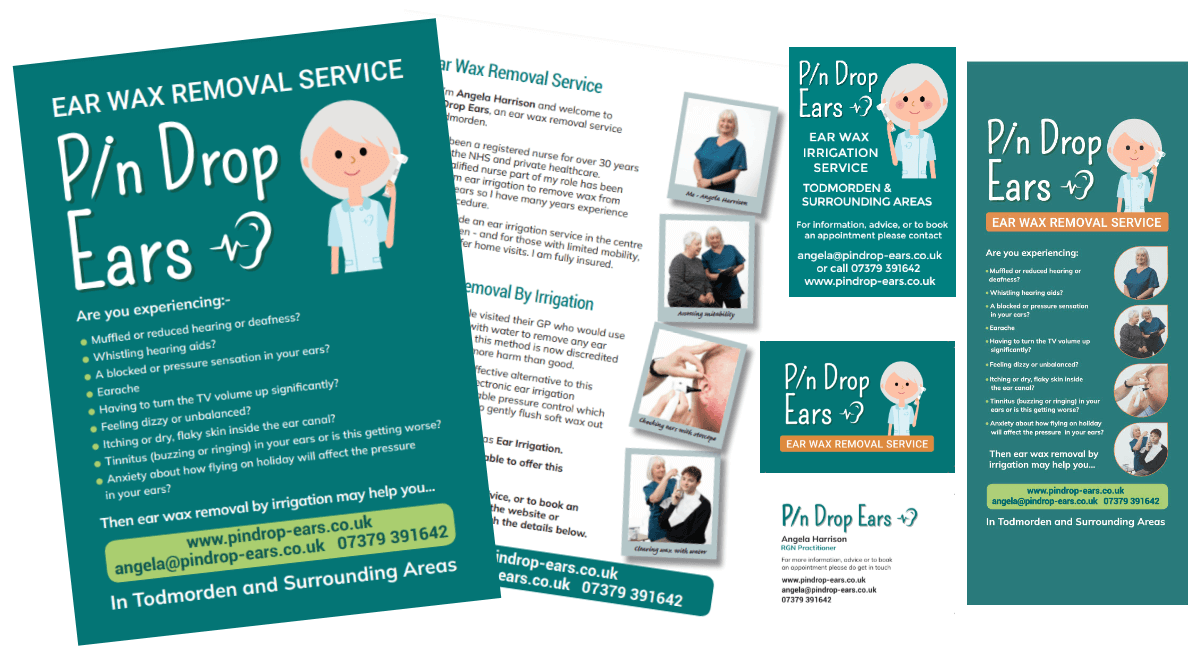
iii) Created the concept for a Pop Up Banner, A5 Flyers and Business Cards and then sought the help of a local graphics designer to complete the design and provide “print-ready” files to get the promotional materials produced. The flyers were then distributed and displayed in a variety of local locations.
iv) Placed a small 1/4 Page Ad in a local ads magazine which is posted through letterboxes in our area every month. (Booked placement for 6 publications as just placing it for a couple of months doesn’t give enough time to gauge its full potential).
v) Booked a stall at a local country fair offering ear checks at just £1 for that day. Although the last three steps did incur a cost, all were very reasonable for the anticipated – and in some cases already achieved – very healthy ROI.
Step 6: Keep Going!
Even when (or if) you’ve done all of the above and attracted your first few customers you can’t stop there. You will still need to continue to promote your business, maybe trying different things to see what works best for you.
For Pin Drop Ears, regular posting within a variety of local community groups on Facebook has proved very effective and productive for us so far.
In the first couple of months, you will almost certainly identify slight issues or ‘pinch-points’ in your ways of working which you can tweak and refine to make things run more smoothly and efficiently.
In Conclusion
Believe it or not, I wouldn’t say that every business needs a website, but the vast majority WILL need some form of ongoing marketing / promotional activity to keep enough new customers or clients coming through.
However, in the case of Pin Drop Ears, it has definitely been beneficial as a lot of enquiries and bookings come directly through the website – and people comment on how informative and useful they found it.
A good website adds credibility, reassurance and professionalism and can certainly help you stand out amongst your competitors.
If you have any questions about building a business from scratch, or rebranding and kickstarting your existing business then please do get in touch.

